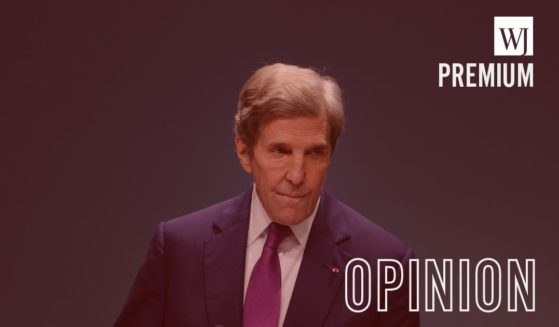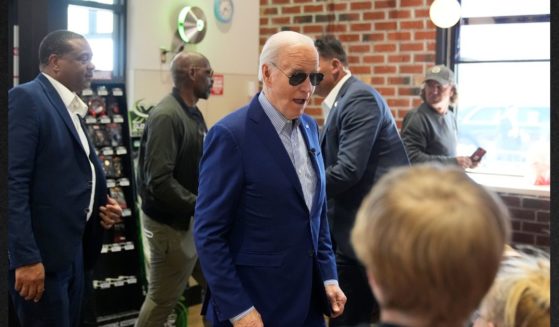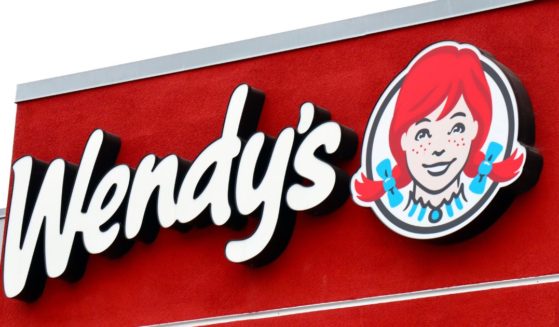Inflation Hits a 13-Year High - Is Stagflation Around the Corner?
The Bureau of Labor Statistics reported Wednesday that the consumer price index surged 0.8 percent in April to clock in at a whopping 4.2 percent inflation rate for the year, the highest since 2008.
The Federal Reserve sets the acceptable inflation target at 2 percent — a mark it has met for more than a decade.
The report landed on the heels of massive back-to-back drops in the stock market. The Dow, Nasdaq Composite and S&P 500 all lost 3 to 3.5 percent in the past two days, erasing all of their gains for the past six weeks. The Dow, in particular, had its worst day since January on Wednesday.
CNBC reported that prior to the release, Dow Jones canvassed economists who expected inflation to reach 3.6 percent.
Used Car Prices Drive Back to the Eisenhower Administration
The largest increase the report highlighted was a massive surge in used car prices: 10 percent, the highest one-month increase since 1953.
A lot of this demand is due to far fewer new cars being manufactured following a shortage of computer chips from Asia. German semiconductor company Infineon estimates that a lack of microchips may result in 2.5 million fewer cars produced worldwide during the first half of the year.
Ford also announced that it would slash the number of vehicles it planned to produce this year in half — to 1.1 million units — due to the chip shortage.
Inflation Touches Nearly Every Industry
The BLS also reported that “[n]early all major component indexes increased in April.” Taking food and energy out of the mix, the CPI rose 0.9 percent — its largest monthly increase in nearly 40 years.
Practically every aspect of the economy saw a rise, including motor vehicle insurance, housing, airline fares, recreation and household furnishings. Gasoline, which rose a whopping 9.1 percent in March, now costs 50 percent more than this time last year.
The report does not include the effects of the recent Colonial Pipeline attack that shut down gas deliveries for much of the East Coast. That will have to wait for the May report.
Going Back to the 1970s – Malaise, Stagflation and the Misery Index
Some analysts compare our current economic environment to that of the 1970s and point out that we could be entering a period of stagflation.
Stagflation marks a period of rising prices and slow economic growth that just needs three simple ingredients: high unemployment, high inflation and a low GDP. The U.S. already has the high inflation, and the BLS reported that the unemployment rate rose to 6.1 percent in April. Prior to the pandemic, it consistently remained below 4 percent.
What about economic growth? The GDP certainly had quite a whipsaw last year, falling and rising more than 25 percent as the country shut down then reopened, but it grew 6.4 percent during the first quarter of 2021. The previous five years saw growth ranging from 1.7 to 3.1 percent, according to The Balance.
But how much of that increase was fueled by government spending?
According to the Congressional Budget Office, government spending comprised a whopping 31 percent of GDP during fiscal year 2020 — far, far higher than the 20.4 percent average of the past 50 years.
Last spring, the government pumped $3 trillion into the economy, followed by $900 billion in December and a further $1.9 trillion in March. And now Biden is trying to sell a $2.3 trillion infrastructure and jobs plan. That totals $8.1 trillion.
In 2020, the IRS collected $3.42 trillion in revenue. The U.S. national debt now stands at $28 trillion.
It seems pretty clear that this level of spending is not sustainable, and neither is the economic growth. The U.S. stands on the cusp of entering a period not seen in more than 40 years, a period defined by another term: the Misery Index.
In the 1970s, Brookings economist Arthur Okun took the unemployment rate, added the inflation rate to it and created the Misery Index. Following the 1973 oil embargo, the index ranged between 13 and 20 percent throughout the 1970s.
In 2019, it was 5.4 percent, but the Misery Index today would be 10.3 percent.
Economist Nouriel Roubini of New York University’s Stern School of Business last month sounded the alarm on stagflation.
“Make no mistake: inflation’s return would have severe economic and financial consequences. We would have gone from the ‘Great Moderation’ to a new period of macro instability,” Roubini said.
“The secular bull market in bonds would finally end, and rising nominal and real bond yields would make today’s debts unsustainable, crashing global equity markets. In due time, we could even witness the return of 1970s-style malaise.”
If we are returning to a 1970s-style malaise, one thing is certain: My sideburns are far too short.
Truth and Accuracy
We are committed to truth and accuracy in all of our journalism. Read our editorial standards.












